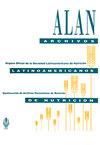墨西哥成年人肥胖的诊断和治疗:2006年至2018年的变化
IF 0.3
4区 医学
Q4 NUTRITION & DIETETICS
引用次数: 0
摘要
在世界范围内,体重一直在增加。正因为如此,已经实施了诊断和治疗肥胖的计划。需要记录这些项目是否使肥胖患者得到了有效的诊断和治疗。目的:确定和比较2006年至2018年间墨西哥成年人肥胖和故意减肥的诊断和治疗患病率的变化,并确定在此期间这些事件的社会差异是否发生了变化。材料与方法:对2006年(N=26,738)和2018年(N= 12,205)开展的墨西哥国家健康与营养调查数据库进行分析。这些事件是BMI为bbb30的墨西哥成年人的肥胖诊断和治疗以及有意减肥。自变量为性别、年龄、体重指数、社会经济地位和地理区域。结果:从2006年到2018年,接受诊断或治疗的肥胖人群的患病率(从20.4%增加到51.1%)或治疗(从8.3%增加到21.4%)增加。有意减肥的患病率也有所增加(从5.5%增加到10.0%),但这主要发生在高社会经济地位的人群中。多变量回归模型显示,女性、高BMI人群和高社会经济地位人群更有可能接受诊断和治疗。结论:尽管在墨西哥,肥胖症诊断和治疗的可及性有所增加,但有意减肥的患病率较低。此外,在这些事件中,社会经济差异仍然存在。本文章由计算机程序翻译,如有差异,请以英文原文为准。
Diagnóstico y tratamiento de la obesidad en adultos mexicanos: cambios entre 2006 y 2018
Introduction: Worldwide, there has been an increase in body weight. Because of this, programs have been implemented to diagnose and treat obesity. It is required to document whether these programs have led people with obesity to receive effective diagnosis and treatment. Objective: To determine and compare the changes between 2006 and 2018 in the prevalences of diagnosis and treatment of obesity and intentional weight loss among Mexican adults and to identify whether there were changes in the social disparities in these events during this period. Materials and methods: The databases of the National Health and Nutrition Survey of Mexico carried out in 2006 (N=26,738) and 2018 (N= 12,205) were analyzed. The events were diagnosis and treatment of obesity and intentional weight loss in Mexican adults with BMI > 30. The independent variables were sex, age, body mass index, socioeconomic status, and geographic region. Results: From 2006 to 2018, the prevalence of people with obesity who received the diagnosis (from 20.4% to 51.1%) or treatment (from 8.3% to 21.4%) increased. The prevalence of intentional weight loss also increased (from 5.5% to 10.0%), but this was mainly in people with high socioeconomic status, Multivariate regression models revealed that, women, people with a higher BMI, and those with a higher socioeconomic status were more likely to receive diagnosis and treatment. Conclusions: Although in Mexico access to diagnosis and treatment of obesity has increased, the prevalence of intentional weight loss is low,In addition, socioeconomic disparities persist in these events.
求助全文
通过发布文献求助,成功后即可免费获取论文全文。
去求助
来源期刊
CiteScore
0.50
自引率
0.00%
发文量
31
期刊介绍:
Archivos Latinoamericanos de Nutrición (ALAN) is the official publication of the Sociedad Latinoamericana de Nutición (SLAN), for the dissemination of knowledge in the fields of food and nutrition, principally throughout the American Hemisphere. Articles in Spanish, English, Portuguese and French are accepted, both from the Society members and from nonmembers, in the following categories: 1. General articles (critical scientific reviews); 2. Research articles (originals); 3. Papers in applied nutrition (analytical results from intervention programs and discussion of reconmendations of practical application), and 4. Letters to Editor (short comments of general interest or about scientific facts and results previously published in Archives).

 求助内容:
求助内容: 应助结果提醒方式:
应助结果提醒方式:


